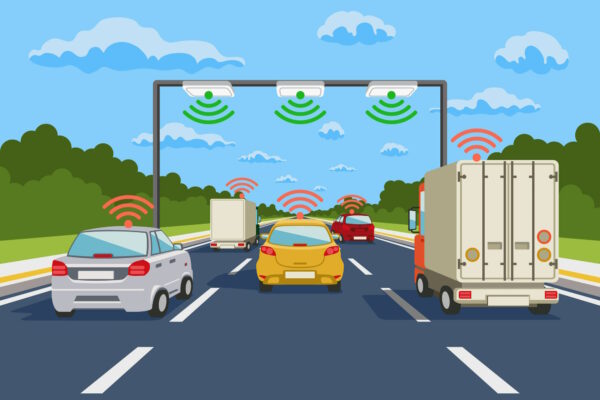Human error is responsible for not far off 100% of vehicle collisions. It’s only the odd mechanical failure and unexpected natural cause (an animal running out in front of you, for example) that doesn’t fit into the category.
Self-driving vehicles are expected to cut the number of crashes significantly (although, it will take several decades before the majority of vehicles have enough of these features). In the interim, though, another technology looks promising, and that’s called Vehicle-to-Everything, or V2X. It has the potential to reduce or lessen the severity of up to 80% of collisions.
V2X is a communications protocol which enables the vehicle to talk to other vehicles, pedestrians and infrastructure (V2V, V2P and V2I), and provides real-time information about the status and position of these objects. It would enable displays, warnings, route deviations and risk prevention predictions while driving.
For example, truck drivers could be made aware of cyclists and scooterists in their blind spot. Drivers could be warned in advance of infrastructure failure or delays ahead (e.g. traffic lights out, road works, congestion due to events, etc). Vehicles that have to brake suddenly for an obstacle, for example traffic backing up on a motorway, could communicate to vehicles behind them to slow down and thus try to smooth out the flow which could avoid a jamiton.
In Detroit, V2X gives snowploughs priority in some intersections, and the same technology is being used in Atlanta to help buses stay on schedule by changing traffic light phasing to get them through the intersections.
It also has applications for industry where there are many vehicle movements such as in mining and warehousing, working in with geofences and other technology. Emergency services vehicles could be prioritised through intersections when responding to a call.
Route planning optimisation based on sensors in the road could save money for delivery drivers and help reduce congestion (thus saving money in fuel and time) or find the most convenient parking space (thus saving money in parking fines).
Many of the applications are being achieved by using signage or sensors embedded in the road which is costly to install and can be expensive to maintain. If a critical mass of vehicles contained V2X technology, some signage would become obsolete.

The main issue with making this a reality is getting all stakeholders to communicate together: vehicle manufacturers, mobile network operators, local councils, the government, wearable tech companies, and technology solutions providers to infrastructure.
So, while it’s not going to be able to track that red stag that jumps out in front of your car, low-level autonomous technology such as forward collision warning and autonomous emergency braking can help there.
